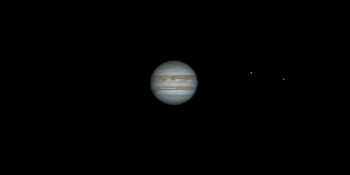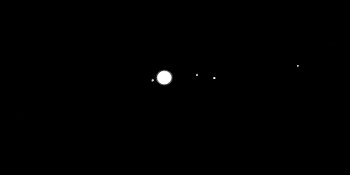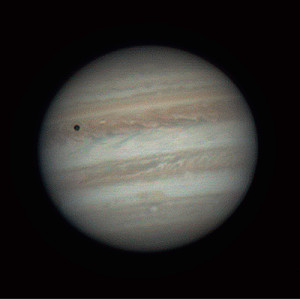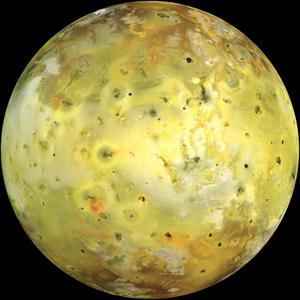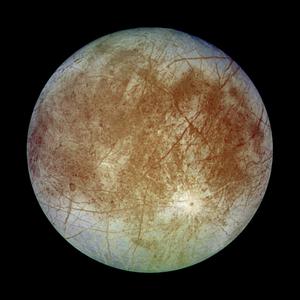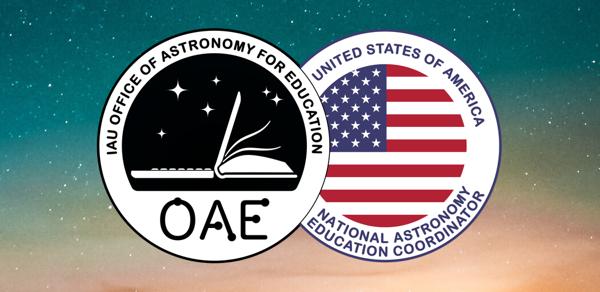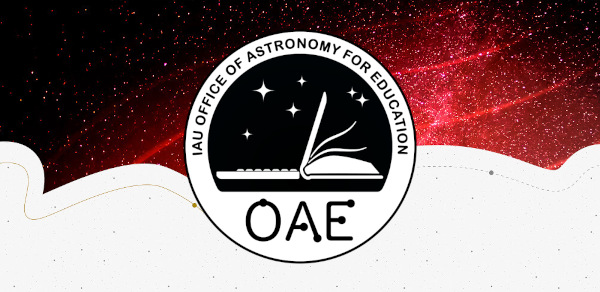Glossarbegriffe: Galileische Satelliten
Description: Die Galileischen Satelliten sind die vier größten und hellsten Satelliten bzw. Monde, die den Planeten Jupiter umkreisen: Io, Europa, Ganymed und Callisto. Io ist dem Jupiter am nächsten und hat Hunderte von aktiven Vulkanen. Das liegt hauptsächlich daran, dass Io durch die Gezeitenwirkung der Schwerkraft des Jupiters "durchgeknetet" wird. Die gesamte Oberfläche von Europa ist mit Eis bedeckt. Unter dem Eis wird ein Ozean aus flüssigem Wasser vermutet, der einer der besten Kandidaten für die Entstehung von Leben außerhalb der Erde im Sonnensystem ist. Ganymed ist der größte Mond in unserem Sonnensystem und auch der Mond mit der größten Masse: Sie ist doppelt so groß wie die des Erdmondes. Kallisto ist fast genau so groß wie der Planet Merkur, hat aber nur etwa ein Drittel der Masse des Merkurs.
Die vier Galileischen Monde wurden von Galileo Galilei im Jahr 1610 entdeckt, als eine von mehreren Entdeckungen im Rahmen seiner Pionierarbeit bei der Verwendung eines Teleskops für astronomische Beobachtungen. Galilei konnte nachweisen, dass die vier Monde den Jupiter im Laufe der Zeit wie ein Miniatur-Sonnensystem umkreisen. Dies war ein klarer Beweis dafür, dass astronomische Objekte einen anderen Mittelpunkt als die Erde umkreisen können. Diese Beobachtung spielte eine wichtige Rolle bei der Verlagerung des wissenschaftlichen Konsenses von der erdzentrierten (geozentrischen) zur sonnenzentrierten (heliozentrischen) Sicht des Sonnensystems.
Zugehörige Glossarbegriffe:
See this term in other languages
Term and definition status: The original definition of this term in English have been approved by a research astronomer and a teacher The translation of this term and its definition is still awaiting approval
The OAE Multilingual Glossary is a project of the IAU Office of Astronomy for Education (OAE) in collaboration with the IAU Office of Astronomy Outreach (OAO). The terms and definitions were chosen, written and reviewed by a collective effort from the OAE, the OAE Centers and Nodes, the OAE National Astronomy Education Coordinators (NAECs) and other volunteers. You can find a full list of credits here. All glossary terms and their definitions are released under a Creative Commons CC BY-4.0 license and should be credited to "IAU OAE".
Zugehörige Medien
Jupiter's Rotation, by Vishal Sharma, India
Bildnachweis: Vishal Sharma/IAU OAE
License: CC-BY-4.0 Creative Commons Namensnennung 4.0 International (CC BY 4.0) icons
Jupiter Moons Movie2, by Nicolas Hurez, Paul-Antoine Matrangolo, and Carl Pennypacker, United States of America
Bildnachweis: Nicolas Hurez, Paul-Antoine Matrangolo and Carl Pennypacker/IAU OAE
License: CC-BY-4.0 Creative Commons Namensnennung 4.0 International (CC BY 4.0) icons
Jupiter, Io and its shadow, by Ralf Burkart, Germany
Bildnachweis: Ralf Burkart/IAU OAE
License: CC-BY-4.0 Creative Commons Namensnennung 4.0 International (CC BY 4.0) icons
Io
Bildnachweis: NASA/JPL/University of Arizona credit link
License: PD Public Domain icons
Europa
Bildnachweis: NASA/JPL/DLR
License: PD Public Domain icons
